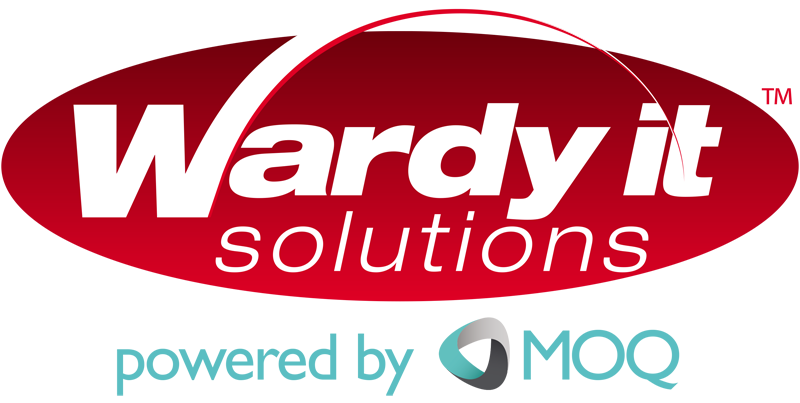The last six months have been challenging for organisations around the world as a result of the pandemic. However closer to home in Australia, the pandemic was a double-blow off the back of the Black Summer bushfires. The meme – Year 2020, have you tried turning it off and on again I think reflects the broad sentiment of the year to-date. For many organisations, the end of financial year cannot come soon enough as this provides an opportunity to press the reset button and start all over again.
The beginning of the new financial year has always reminded me of the first day of school each year. As a child, the simple tradition of brand new stationary and a perfectly ironed uniform with shiny shoes meant that whatever happened in the previous year, didn’t seem to matter anymore as the focus was on the year ahead – I still get that same feeling when I start a new Moleskine for taking notes.
For me, the new financial year is an opportunity to reflect on what has been achieved in the year that was and to provide clarity on what we want to achieve in the year ahead. It is surprising when you look back about how much positivity there was, as often in the day-to-day grind, it is difficult to be objective with all of the doom and gloom surrounding us.
With the pandemic still weighing on people’s mind many executives are finding it hard to find the clarity that a new financial brings, as budgets are being set with different speeds from best case scenario to worst case scenario and various iterations in between. Many organisations are still utilising traditional operational reporting for their budgeting processes, which slows the whole process down. With a modern data warehouse, it is easier and much more cost effective than ever, to enable prescriptive insights rather than looking in the rear vision mirror with traditional reporting. If you would like to know more about how to enable this rich insight for your data, then why not contact us today for a complimentary data modernisation assessment.
July SQL Server User Group
Wednesday had a great turnout at the SQL Server User Group webinar!
Power BI is easy to get started with but so many are unsure about how to make it really enterprise-friendly.
How should authentication be used? Do I still create an underlying data warehouse? Where do I implement security? Do I stage source system data? How should my data models be designed? Can I keep my data on premises if I need to?
The webinar joined Dr Greg Low as he discusses the above, based on his experiences of implementing Power BI in enterprises.
Microsoft Build Conference: An MOQdigital Review
Microsoft recently held their Build conference, an annual conference aimed at software engineers and web developers using Windows, Microsoft Azure and other Microsoft technologies.
Piers Matthews of MOQdigital attended the conference, and shared his insights in this helpful blog post. The WARDY IT team were excited to hear all about the virtual event.
You can read Piers’ blog post about the Microsoft Build conference here:
Virtual DBA Service Q1 20/21 Roadmap
SQL Beacon™ is an agentless monitoring and alerting engine that polls your infrastructure and SQL Servers to generate notifications for events before they become issues. The data captured by SQL Beacon™ is also used to populate the MyVirtualDBA™ portal.
Since implementing the 2020 Q3 roadmap, we’ve been collating feature requests from UserVoice and we are pleased to announce our 2020/2021 Q1 roadmap:
Do you rely on an offshore MSP?
Businesses relying on offshore staffing may be completely unaware that COVID-19 curfews and overseas restrictions pose a risk to their own operations.
To protect your organisation and avoid risking disruption, it is important to understand the support service you have in place. Rather than relying on assumptions, we have compiled a number of questions to ask your MSP:
Licensing SQL Server in Azure Webinar
WARDY IT hosted a webinar on Licensing SQL Server in Azure.
Watch the webinar recording to learn how your existing investments in SQL Server licensing can be used to optimise the costs associated with the usage of SQL Server workloads in Azure.
The webinar was hosted by two speakers: Troy Parker, founder of Discover SAM Pty Ltd, and Phil Jones, General Manager of WARDY IT Solutions Professional Services.
Azure SQL: What to use when + what’s new
A lot has changed with SQL Server and Azure over the last 12 months. This video from the Microsoft Build conference outlines the latest capabilities in Azure SQL including IaaS, SQL Managed Instance and SQL Database.
Learn about the latest capabilities in the Azure SQL family along with migration updates:
Cheat sheet for Azure Synapse Analytics
This cheat sheet provides helpful tips and best practices for building Azure Synapse solutions.
When you know in advance the primary operations and queries to be run in your data warehouse, you can prioritise your data warehouse architecture for those operations.
This cheat sheet from the Microsoft documentation on Azure Synapse goes through the operations you’ll need to know to perform queries such as:
- Joining one or two fact tables with dimension tables, filtering the combined table, and then appending the results into a data mart.
- Making large or small updates into your fact sales.
- Appending only data to your tables.
Learning-as-a-Service
If you have time to learn something new, we have arranged a number of online courses related to data analysis and Microsoft applications, accessible on our Learning-as-a-Service platform.
Consider our Infrastructure as Code course, which will enable you to deliver stable environments rapidly, reliably and at scale, by representing your environments as code.
Take a look at our online courses here:
How Azure Synapse Analytics enables you to run T-SQL queries over your Data Lake files
One of the important features of Azure Synapse Analytics is the ability to analyse the files placed on Azure Data Lake Storage (ADLS) and Azure Blob Storage using Transact-SQL language. Azure Synapse provides provisioned and serverless SQL endpoints that enable you to query large amounts of data using well-known Transact-SQL language.
In this article you will learn how to leverage Synapse SQL serverless endpoint to explore your files, build a relational layer over your storage files, and use SQL serverless features to analyse your files and implement security mechanism that controls access to your data.

